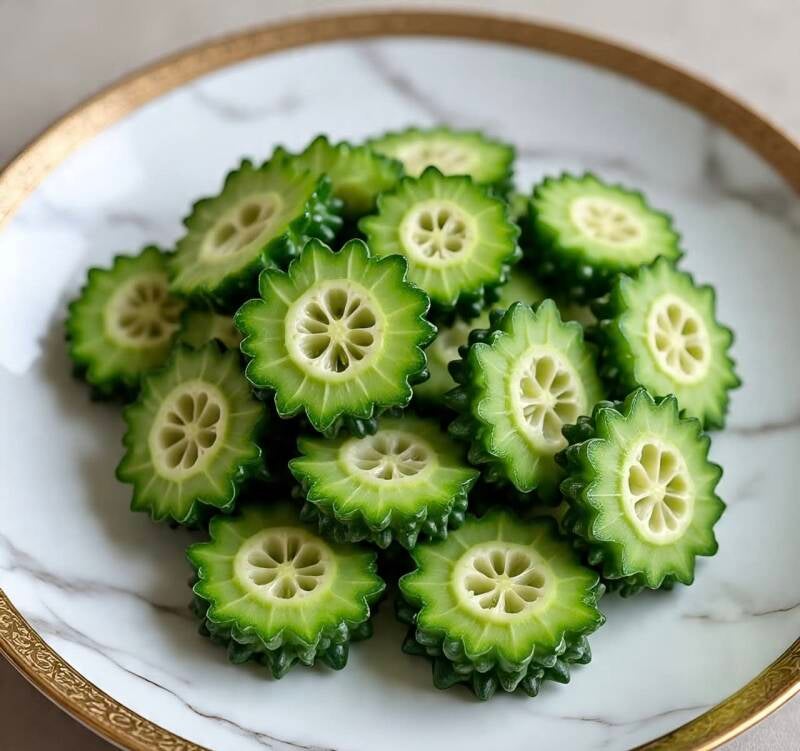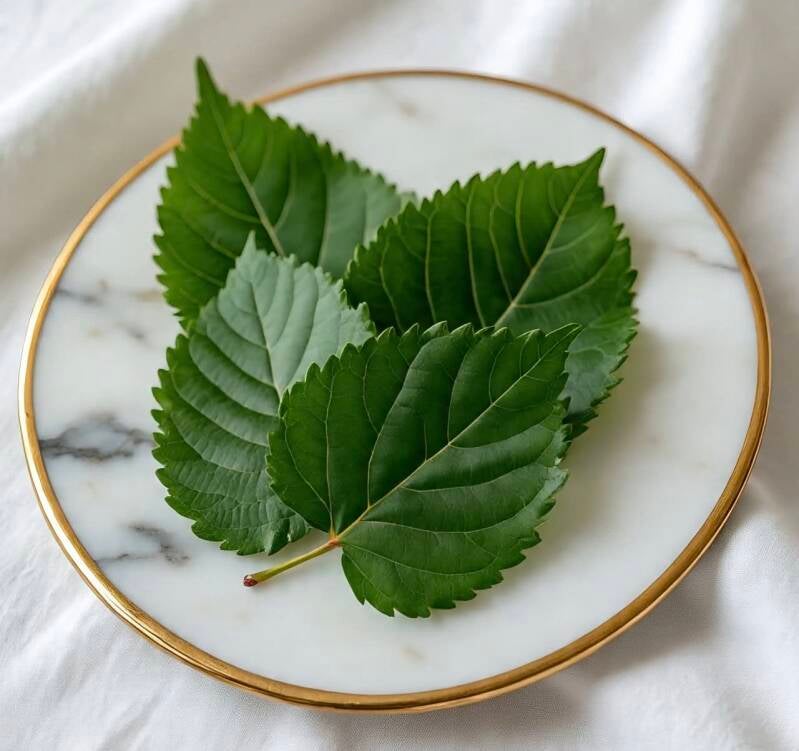
Managing type 2 diabetes isn’t just about medication — what you eat plays a big role too. Certain vegetables and herbs can naturally help your body handle blood sugar better. They don’t replace medical care, but when added to a balanced diet, they can make a real difference in your energy, digestion, and long-term health.
Let’s take a look at ten options that have been studied for their ability to support blood sugar control.

1. Bitter Melon (Karela)
This bumpy green vegetable is common in South Asian cooking, and it’s been used in traditional medicine for centuries. Bitter melon contains compounds that act a bit like insulin, helping your cells use sugar more effectively.
How to use it: Try it in curries, stir-fries, or juices. It’s very bitter, but combining it with onions or tomatoes can soften the flavor.
What research says: Studies have found that bitter melon can lower fasting blood sugar in people with type 2 diabetes, though results vary from person to person.

2. Spinach and Leafy Greens
Leafy greens like spinach, kale, and mustard greens are low in carbs but full of magnesium, fiber, and antioxidants. These nutrients help regulate blood sugar and protect against heart problems, which are common in diabetes.
How to use it: Add them to omelets, soups, or smoothies. Even frozen spinach keeps its nutrients.
What research says: A diet rich in leafy greens has been linked to better blood sugar control and a lower risk of developing diabetes.

3. Broccoli and Cauliflower
Both are part of the cruciferous vegetable family and contain a compound called sulforaphane, known for improving insulin sensitivity and reducing inflammation.
How to use it: Roast them with olive oil, steam them, or toss them into stir-fries.
What research says: Sulforaphane has been shown to help reduce fasting glucose levels in some human and animal studies.

4. Onions
Onions are not only flavorful but also helpful for blood sugar balance. They contain quercetin and sulfur compounds that can improve insulin action.
How to use it: Use onions raw in salads or cooked in curries and soups.
What research says: Some studies show onion extract can lower blood sugar and cholesterol levels in people with diabetes.

5. Garlic
Garlic is famous for its heart-protective benefits, but it also supports healthy blood sugar levels. It may help your body make better use of insulin and reduce inflammation.
How to use it: Fresh garlic is best — crush or chop it and let it sit for a few minutes before cooking to activate its compounds.
What research says: Clinical studies show garlic can lower fasting blood glucose and improve cholesterol in people with type 2 diabetes.

6. Fenugreek (Methi)
Fenugreek seeds are rich in soluble fiber, which slows digestion and sugar absorption. It’s a common natural remedy for diabetes in South Asia.
How to use it: Soak fenugreek seeds overnight and drink the water in the morning, or add the seeds or powder to curries and breads.
What research says: Multiple studies found that fenugreek helps lower blood sugar and improve glucose tolerance.

7. Cinnamon
This popular spice can improve insulin sensitivity and help your body use sugar more effectively. However, it’s best to use it in moderation.
How to use it: Sprinkle cinnamon on oatmeal, coffee, or yogurt. Ceylon cinnamon (“true” cinnamon) is considered safer for regular use than Cassia cinnamon.
What research says: Research suggests cinnamon may lower fasting blood sugar levels, though the effect can vary.

8. Turmeric (Curcumin)
Turmeric is another spice with powerful anti-inflammatory effects. Its active ingredient, curcumin, may improve insulin sensitivity and lower blood sugar levels.
How to use it: Add turmeric to soups, curries, or warm milk (“golden milk”). Combine it with black pepper for better absorption.
What research says: Studies show curcumin can help improve blood sugar control and reduce diabetes-related inflammation.

9. Ginger
Ginger helps with digestion and may reduce fasting blood sugar and A1C levels. It also supports healthy circulation and reduces inflammation.
How to use it: Fresh ginger can be grated into tea, smoothies, or savory dishes.
What research says: Some studies found that ginger supplements improved long-term blood sugar control in people with type 2 diabetes.

10. Mulberry Leaves
Mulberry leaves are rich in antioxidants and compounds that may help lower blood sugar and cholesterol levels. They support heart health, improve metabolism, and can aid in weight management by reducing sugar absorption.
How to use it: Dried mulberry leaves can be steeped into tea, added to smoothies, or taken in capsule form as a supplement.
What research says: Studies suggest that mulberry leaf extract can help reduce post-meal blood sugar spikes and improve insulin sensitivity in people with type 2 diabetes.
Sources
- Chao, C. Y., et al. (2023). Momordica charantia (bitter melon) efficacy and safety on glucose metabolism in prediabetes: A randomized controlled trial. Frontiers in Nutrition, 10, 1200801.https://doi.org/10.3389/fnut.2023.1200801
- Lee, Y. S., et al. (2020). mcIRBP-19 of bitter melon peptide effectively regulates diabetes: A clinical trial. Frontiers in Pharmacology, 11, 728198.https://doi.org/10.3389/fphar.2020.728198
- Khan, S., et al. (2024). Effect of low-dose bitter melon powder on type 2 diabetes. Journal of Nutrition, Fasting and Science, 6(1), 15–22.
- Zhang, Y., et al. (2021). Mulberry leaf extract improves glycaemic and insulinaemic responses in healthy adults: A randomized, double-blind, placebo-controlled trial. Nutrients, 13(4), 1304.https://doi.org/10.3390/nu13041304
- Rahman, M., et al. (2023). A randomized, placebo-controlled crossover study of mulberry leaf extract blend in people with type 2 diabetes. BMC Complementary Medicine and Therapies, 23(1), 122.https://doi.org/10.1186/s12906-023-03843-0
- Bahadoran, Z., et al. (2012). Effect of broccoli sprout powder on insulin resistance in type 2 diabetic patients: A randomized double-blind clinical trial. International Journal of Food Sciences and Nutrition, 63(7), 767–771.https://doi.org/10.3109/09637486.2011.652597
- Kafeshani, M., et al. (2024). Garlic supplementation and glycemic control: Systematic review and meta-analysis of randomized controlled trials. Nutrients, 16(11), 1692.https://doi.org/10.3390/nu16111692
- Ashraf, R., et al. (2017). Effect of garlic supplement in the management of type 2 diabetes: A randomized controlled trial. International Journal of Endocrinology and Metabolism, 15(2), e5642189.https://doi.org/10.5812/ijem.5642189
- Ali, S. M., et al. (2023). Role of fenugreek, cinnamon, Curcuma longa, berberine, and Momordica charantia in type 2 diabetes mellitus treatment: A review. Plants, 12(7), 1432.https://doi.org/10.3390/plants12071432
- Mahomoodally, M. F., et al. (2023). Use of herbal products in the management of hyperglycemia: An evidence-based review. World Journal of Diabetes, 14(4), 412–433.https://doi.org/10.4239/wjd.v14.i4.412
- Chen, X., et al. (2021). Evaluation of clinical trials for natural products used in diabetes management. Medicine (Baltimore), 100(42), e27385.https://doi.org/10.1097/MD.0000000000027385
- Mahajan, S., et al. (2013). Effect of raw onion consumption on glycemic control, lipid profile, and body weight in type 2 diabetic patients. Environmental Health Insights, 7, 1–5.https://doi.org/10.4137/EHI.S10609
- Mozaffari-Khosravi, H., et al. (2014). The effects of ginger powder supplementation on insulin resistance and glycemic indices in type 2 diabetic patients: A randomized, double-blind, placebo-controlled trial. Complementary Therapies in Medicine, 22(1), 9–16.https://doi.org/10.1016/j.ctim.2013.10.017
Add comment
Comments